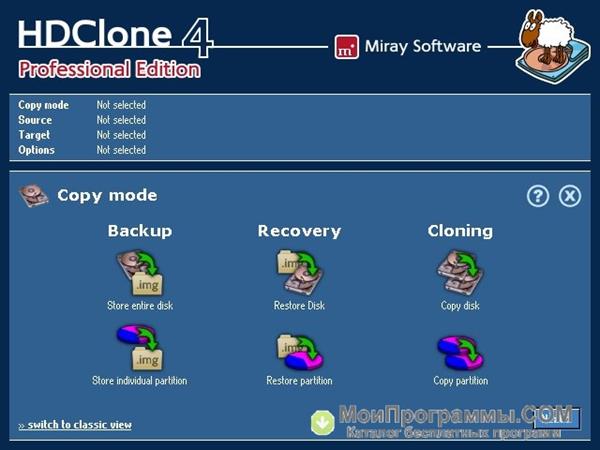
HDClone is also a bootable application, which comes in very handy if you are using it to restore a backup copy of your drive. Meaning that if your operating system completely crashes, instead of doing a new setup and re-installing all your applications you can use the copy you made to restore your hard drive to the exact point you created the clone image. One of the benefits of cloning a drive with your operating system is that it can be used a backup. This allows you to create an exact copy of a disk drive and this includes Solid State Drives, SD Cards, Hard Disk Drives, external drives, pretty much anything that stores data. Need to make an exact replica of a disk drive? HDClone is a great application for cloning entire drives. By using another free software drbl-winroll, which is also developed by us, the hostname, group, and SID of cloned MS windows machine can be automatically changed." Clone, migrate and create images of disks.".However, Clonezilla, containing some other programs, can save and restore not only partitions, but also a whole disk. Based on Partclone (default), Partimage (optional), ntfsclone (optional), or dd to image or clone a partition.AES-256 encryption could be used to secures data access, storage and transfer.The image file can be on local disk, ssh server, samba server, NFS server or WebDAV server.Bittorrent (BT) is supported in Clonezilla lite server, which is suitable for massive deployment.You can also remotely use it to save or restore a bunch of computers if PXE and Wake-on-LAN are supported in your clients. Multicast is supported in Clonezilla SE, which is suitable for massive clone.This is done with ecryptfs, a POSIX-compliant enterprise cryptographic stacked filesystem. One image restoring to multiple local devices is supported.You can also use a lot of boot parameters to customize your own imaging and cloning. Almost all steps can be done via commands and options. Clonezilla live also can be booted on a BIOS or uEFI machine. Both MBR and GPT partition formats of hard drive are supported.Boot loader, including grub (version 1 and version 2) and syslinux, could be reinstalled.LUKS (Linux Unified Key Setup) is supported.LVM2 (LVM version 1 is not) under GNU/Linux is supported.For unsupported file system, sector-to-sector copy is done by dd in Clonezilla. For these file systems, only used blocks in partition are saved and restored by Partclone.

Therefore you can clone GNU/Linux, MS windows, Intel-based Mac OS, FreeBSD, NetBSD, OpenBSD, Minix, VMWare ESX and Chrome OS/Chromium OS, no matter it's 32-bit (x86) or 64-bit (x86-64) OS. Many File systems are supported: (1) ext2, ext3, ext4, reiserfs, reiser4, xfs, jfs, btrfs, f2fs and nilfs2 of GNU/Linux, (2) FAT12, FAT16, FAT32, exFAT and NTFS of MS Windows, (3) HFS+ and APFS of Mac OS, (4) UFS of FreeBSD, NetBSD, and OpenBSD, (5) minix of Minix, and (6) VMFS3 and VMFS5 of VMWare ESX.


 0 kommentar(er)
0 kommentar(er)
